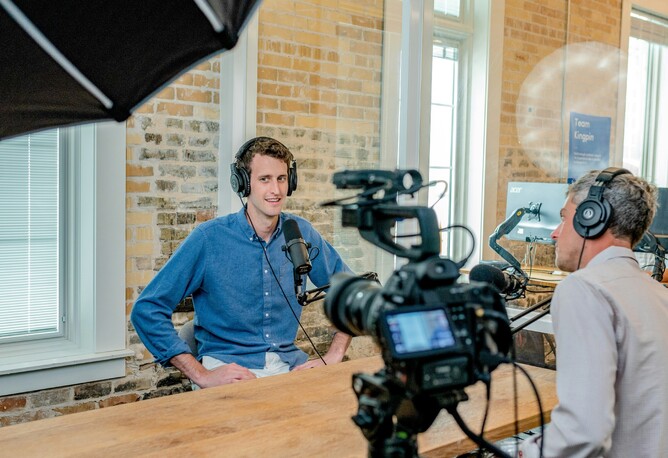This week's local paper reported that the district council improved its media coverage with 80 mentions this year, up from 64 last year. The council also noted its average potential audience reach hit 600,000+ per month, surpassing their 200,000 goal. According to the Council, this is "how we measure success."
At first glance, this might seem pretty impressive. But for seasoned PR professionals, it's clear that this method is mostly about numbers and doesn't really get to the heart of what's happening in the council's earned media scene. Have you read the paper lately? If so, you’d know there’s a lot more happening than these figures suggest.
To be fair to our council, it’s possible they are measuring beyond just outputs and have more meaningful data hidden in a report somewhere. However, we honestly don’t feel compelled to dig deeper into their data, so instead, this brief news story inspired us to share more effective ways to report and measure a business, organisation, or campaign’s impact, influence, and reputation.
Times have changed.
Gone are the days of simply counting hits, reach and measuring media value in equivalent advertising dollar amounts. Today, we need insights to measure how effectively messages connect with audiences, achieve business goals, and enhance long-term brand equity.
Outputs or outcomes?
Back in the day, media reports provided output metrics like the number of media releases distributed, media clippings picked up, and potential audience reach based on print, radio, TV and online media circulation numbers.
Although these metrics are sometimes useful for gauging reach, the most effective reporting systems today focus on outcomes and the actions driven by these outputs.
Examples of modern media measurement include:
Audience engagement - analysing reactions, shares, comments, and time spent on content to gauge how well audiences resonate with the message.
Conversion rates - tracking the customer or audience journey from media exposure to specific actions (like website visits, downloads, or purchases).
Sentiment analysis - assessing the tone of media coverage to understand whether it is positive, neutral, or negative.
Key messages – re-communicating the organisation’s overarching key messages on the topic (or, in other words, publishing your supplied quotes or statements, or having someone else communicate them on your behalf).
The last thing we want for our clients is to be busy ‘doing stuff’. The value we provide our clients is measured by the outcomes achieved.
The emergence of real-time and predictive analytics
Measurement and evaluation are improving further with digital media and AI-driven tools, making real-time reporting the norm. We no longer need to wait for monthly or quarterly reports to assess performance; we can now access and interpret data instantly.
Predictive analytics is another groundbreaking tool that helps us to forecast campaign results and refine strategies. By utilising historical data, machine learning, and audience behaviour patterns, PR professionals can anticipate the reach and effectiveness of upcoming campaigns and address potential issues proactively. Interesting eh!
Multi-channel attribution
We’ve recently been learning more about multi-channel attribution too, and how to report success back to our clients.
Media today spans many channels, from traditional news outlets and social media platforms to influencers and blogs. Effective measurement now relies on multi-channel attribution models, which allocate credit to the different touchpoints contributing to a business or campaign's success.
Popular models include:
Last-touch attribution – this model assigns credit to the last interaction before a desired action (for example, making a purchase or signing up).
Multi-touch attribution - distributes credit across all touchpoints, offering a more holistic view of the audience journey.
Time decay attribution - gives more weight to recent touchpoints, reflecting the impact of momentum in driving conversions.
By understanding which touchpoints contribute most to campaign or business goals, teams like ours can make better-informed decisions about where to allocate resources.
Social listening and voice of customer insights
Effective media reporting today demands active social listening, which involves monitoring customer and public conversations around a brand. This method captures both quantitative and qualitative data, providing an in-depth understanding of how audiences perceive a campaign and its messaging.
Social listening tools can highlight:
Trending topics, uncovering what resonates most with audiences and identifying opportunities to join relevant conversations.
Customer pain points and needs, providing insights into areas where a brand can meet emerging demands or address concerns.
Competitor performance, keeping an eye on competitor campaigns to identify best practices and potential pitfalls.
This type of reporting helps to continuously refine strategies, adapting messages and approaches to stay relevant and responsive to their audiences.
Sentiment analysis
Measuring sentiment is incredibly important.
Natural Language Processing (NLP) and artificial intelligence (AI) have transformed the accuracy and depth of sentiment analysis in media measurement. By processing vast amounts of text, AI can pinpoint underlying emotions, allowing us to go beyond simply identifying positive, neutral, or negative coverage.
They can explore emotional subtleties like enthusiasm, sarcasm, and scepticism, providing a richer understanding of audience sentiment. Incredible stuff!
Can you imagine what this might look like across 80 Council media clippings? (*giggle*)
Measurement against SMART Objectives
We use a measurement and evaluation framework promoted by PRINZ, which enables us to measure and report on PR and media efforts with consistency and transparency. T
In a nutshell, the framework encompasses four things: objectives, outputs, outcomes, and outtakes (impact) in a way that aligns communications metrics with overarching business goals.
This helps us to clearly communicate the value of our work and showcase how each campaign or story drives broader business outcomes.
The future of media reporting and measurement
Media reporting and measurement are always changing, thanks to advances in AI, analytics, and how people engage across different channels. As platforms and audience behaviours shift, being able to grab real-time, meaningful insights is key to success.
By taking a more modern approach to reporting — one that mixes real-time analytics, predictive insights, and feedback from customers — brands can not only see their impact but also steer the conversation.

